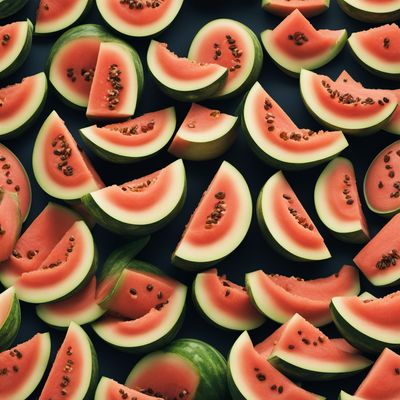
Ingredient
Cucurbits with inedible peel
Exploring the Edible Treasures of Cucurbits
Cucurbits with inedible peel encompass a diverse group of fruits, including winter squash, watermelon, and cantaloupe. They have a firm, often fibrous texture and a range of flavors, from sweet and juicy to nutty and earthy. The inedible peel adds a protective layer and vibrant colors to these fruits.
Origins and history
Cucurbits have a long history dating back thousands of years. Winter squash, for example, was cultivated by Native Americans and played a significant role in their diet. Watermelons are believed to have originated in Africa and have been enjoyed for centuries. Today, cucurbits are grown worldwide and are cherished for their culinary versatility.
Nutritional information
Cucurbits are generally low in calories and rich in vitamins A and C. They also provide dietary fiber and contain varying amounts of other essential nutrients depending on the specific fruit.
Allergens
Individuals with known allergies to cucurbitacins, a compound found in some cucurbits, may experience allergic reactions. It is important to exercise caution and consult a healthcare professional if you have any concerns.
How to select
When selecting cucurbits with inedible peel, choose fruits that feel heavy for their size and have a firm, unblemished skin. Avoid fruits with soft spots, mold, or signs of decay. For watermelons, look for a creamy yellow spot on the underside, indicating ripeness.
Storage recommendations
To prolong the shelf life of cucurbits, store them in a cool, dry place away from direct sunlight. Winter squash can be stored for several months, while watermelons and cantaloupes should be consumed within a week or two for optimal freshness.
How to produce
Cucurbits with inedible peel can be grown in home gardens or purchased from local farmers markets. They require warm temperatures, ample sunlight, and well-drained soil. Follow specific growing instructions for each fruit variety.
Preparation tips
Cucurbits with inedible peel can be prepared in various ways, including roasting, grilling, baking, or steaming. Winter squash can be used in soups, stews, or as a side dish. Watermelons and cantaloupes are commonly enjoyed fresh or used in refreshing beverages and fruit salads.
Substitutions
If cucurbits with inedible peel are not available, you can substitute them with other fruits or vegetables that offer similar flavors and textures. For example, butternut squash can be used as a substitute for winter squash, and honeydew melon can be used instead of cantaloupe.
Culinary uses
Cucurbits with inedible peel are used in a variety of culinary applications. Winter squash is often roasted or pureed for soups and sauces. Watermelons are enjoyed as a refreshing snack or used in fruit salads and beverages. Cantaloupes are commonly eaten fresh or paired with prosciutto for a sweet and savory combination.
Availability
Cucurbits with inedible peel are cultivated in many regions around the world. Winter squash is commonly grown in North America, while watermelons are cultivated in countries with warm climates, such as the United States, China, and India. Cantaloupes are widely grown in Europe, particularly in Spain and Italy.


